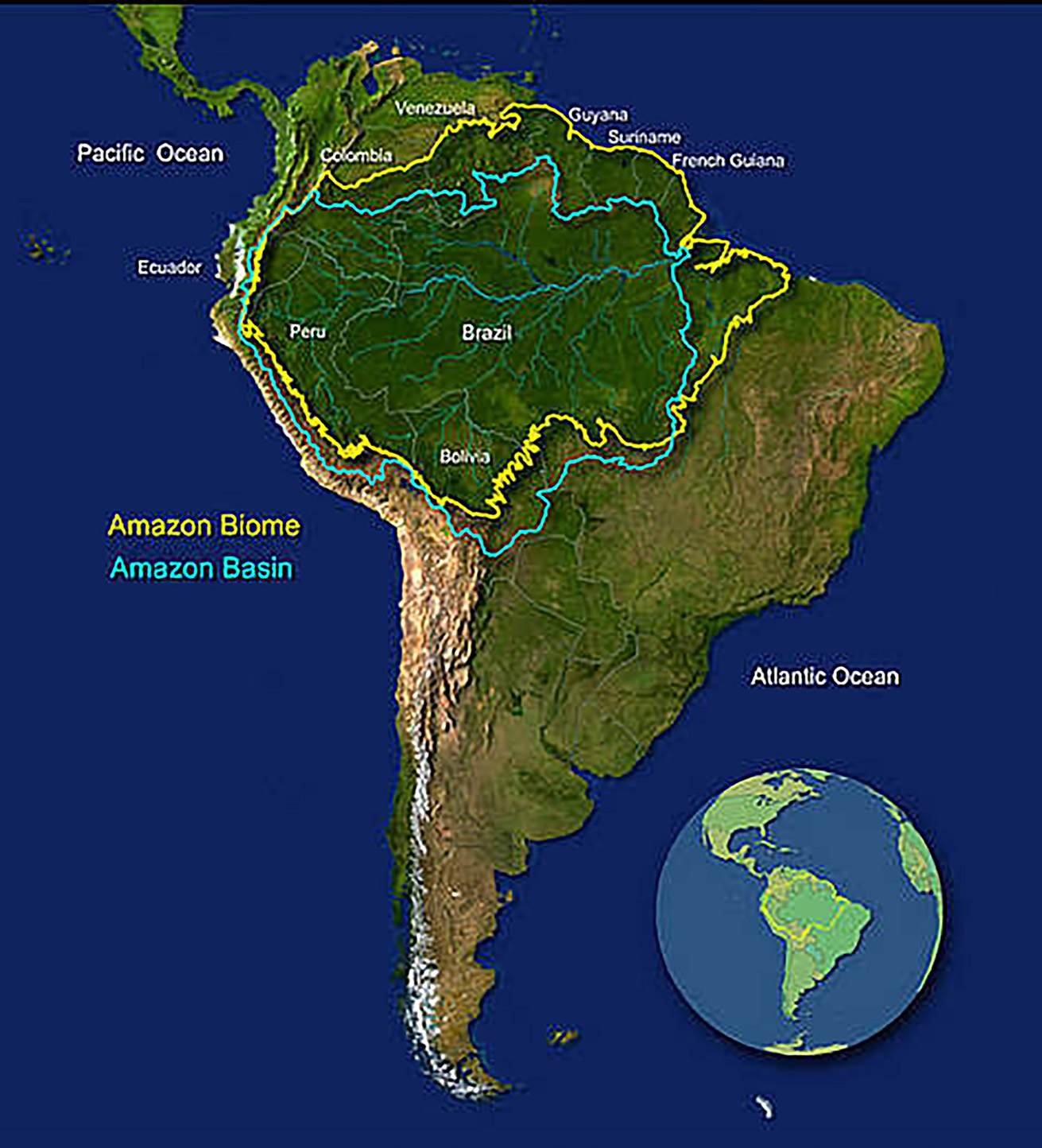Biodiversity & Environment
Amazon Rainforest Nearing Tipping Point
- 11 Mar 2022
- 6 min read
For Prelims: Types of Forest Ecosystem.
For Mains: Environment Pollution and Degradation, Conservation.
Why in News?
A study published recently says that a significant part of the Amazon rainforest has been heading towards a tipping point since the early 2000s. It may be losing its ability to bounce back from extreme events such as drought or fire, threatening to become a dry savanna-like ecosystem.
- In this study, researchers analyzed 30 years of satellite data to understand the resilience of the rainforest and how it has changed over the years.
- The latest findings are consistent with the accumulating evidence that the twin pressures of climate change and human exploitation of tropical forests are endangering the world's largest rainforest, which is home to one out of every 10 species known to science.
What is the Savannah-Like Ecosystem?
- The Savannah ecosystem is a tropical grassland with warm temperatures year-round and with its highest seasonal rainfall in the summer.
- The savanna is characterized by grasses and small or dispersed trees that do not form a closed canopy, allowing sunlight to reach the ground.
- The largest areas of savanna are found in Africa, South America, Australia, India, the Myanmar (Burma)–Thailand region in Asia, and Madagascar.
What are the Findings of the Study?
- Loss of Resilience:
- There are signs of a loss of resilience in more than 75% of the forest, with trees taking longer to recover from the effects of droughts largely driven by climate change as well as human impacts such as deforestation and fires.
- A vicious cycle of damage could trigger "dieback”.
- Dieback: A condition in which a tree or shrub begins to die from the tip of its leaves or roots backwards, owing to disease or an unfavourable environment.
- Implications:
- While it's not clear when that critical point might be reached, the implications for climate change, biodiversity and the local community would be "devastating".
- A previous study predicted that a tipping point would occur when the rainforest witnesses roughly 20-25% of deforestation.
- Causes:
- Deforestation is on the rise:
- It totalled 430 square kilometers in January 2022, five times higher than the same month last year.
- Around a fifth of the rainforest has already been lost, compared to pre-industrial levels.
- This loss will affect the amount of rainfall. Trees take up water through the roots, releasing it into the atmosphere, influencing precipitation over South America.
- Climate Inducing it into Carbon Source:
- Increasing temperatures due to human-induced climate change and deforestation are pushing the rainforest to transform into a carbon source: Places that release more CO2 than they absorb.
- The researchers warn that the forests could release vast amounts of CO2 if they partially transform into dry habitats.
- Anthropogenic Activities are the on the rise:
- Human land-use activities — direct removal of trees, construction of roads, and fires — could be another contributor. It has been on the rise since 2010.
- Deforestation is on the rise:
What are the Suggestions?
- Reducing deforestation will protect the forest’s threatened parts and boost Amazon rainforest resilience.
- Limiting global greenhouse gas emissions is also necessary to safeguard the Amazon.
What are the Key Points Related to Amazon Rainforests?
- These are large tropical rainforests occupying the drainage basin of the Amazon River and its tributaries in northern South America and covering an area of 6,000,000 square km.

- Tropical forests are closed-canopy forests growing within 28 degrees north or south of the equator.
- They are very wet places, receiving more than 200 cm rainfall per year, either seasonally or throughout the year.
- Temperatures are uniformly high - between 20°C and 35°C.
- Such forests are found in Asia, Australia, Africa, South America, Central America, Mexico and on many of the Pacific Islands.
- Comprising about 40% of Brazil’s total area, it is bounded by the Guiana Highlands to the north, the Andes Mountains to the west, the Brazilian central plateau to the south, and the Atlantic Ocean to the east.
PYQ
Which one of the following pairs is correctly matched? (2013)
Geographical Feature Region
(a) Abyssinian Plateau Arabia
(b) Atlas Mountains North-Western Africa
(c) Guiana Highlands South-Western Africa
(d) Okavango Basin Patagonia
Ans: (b)




